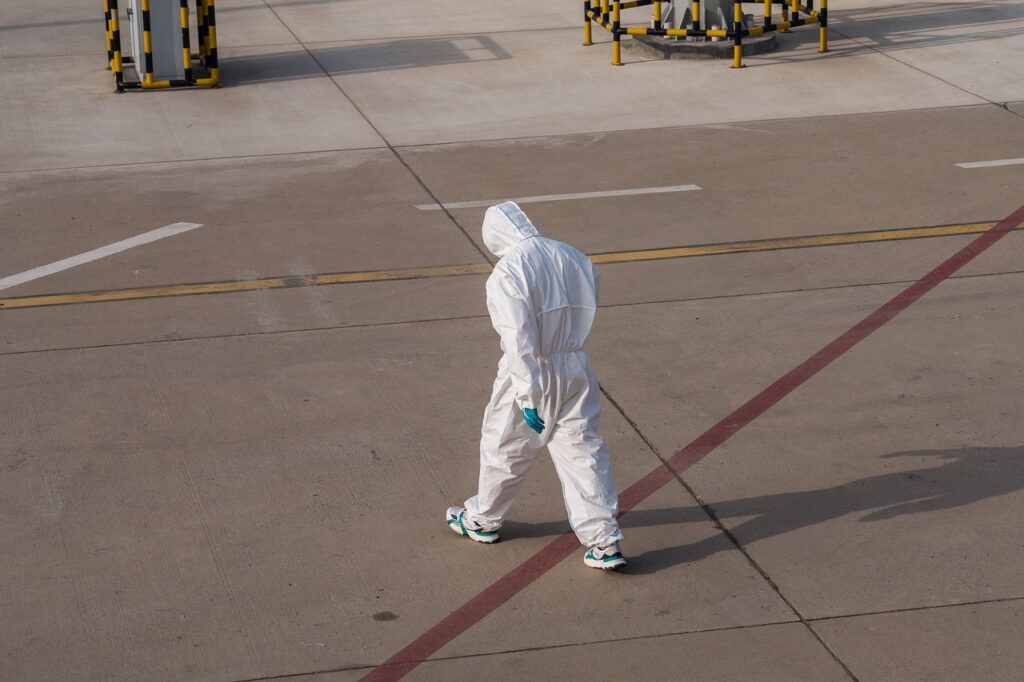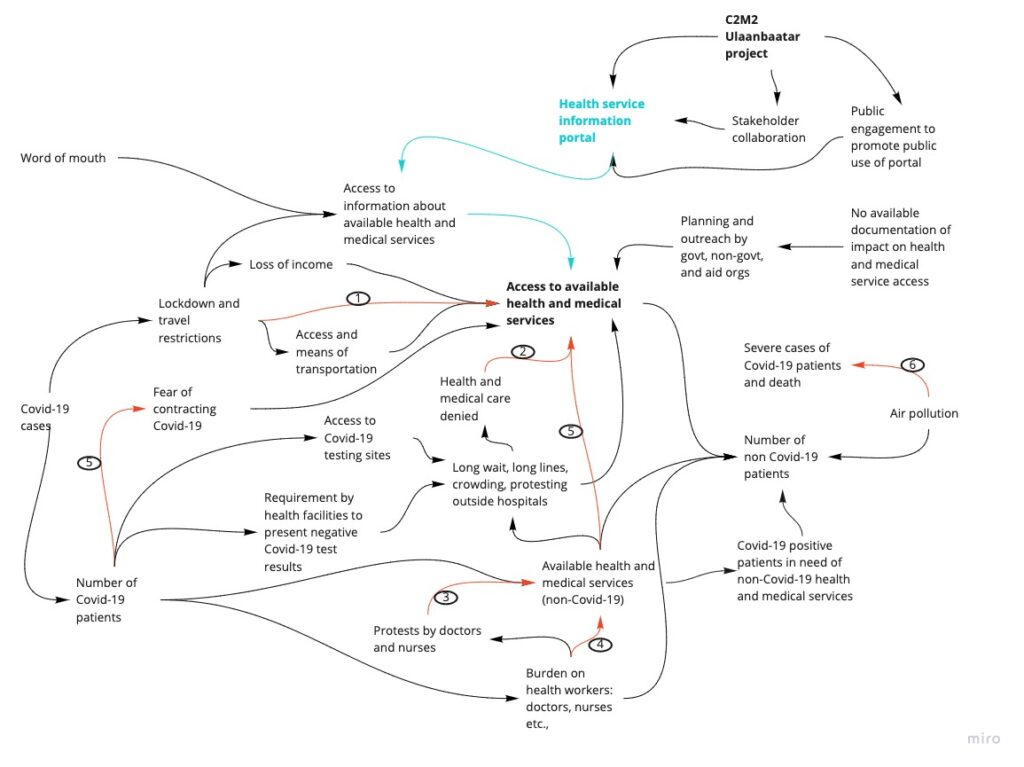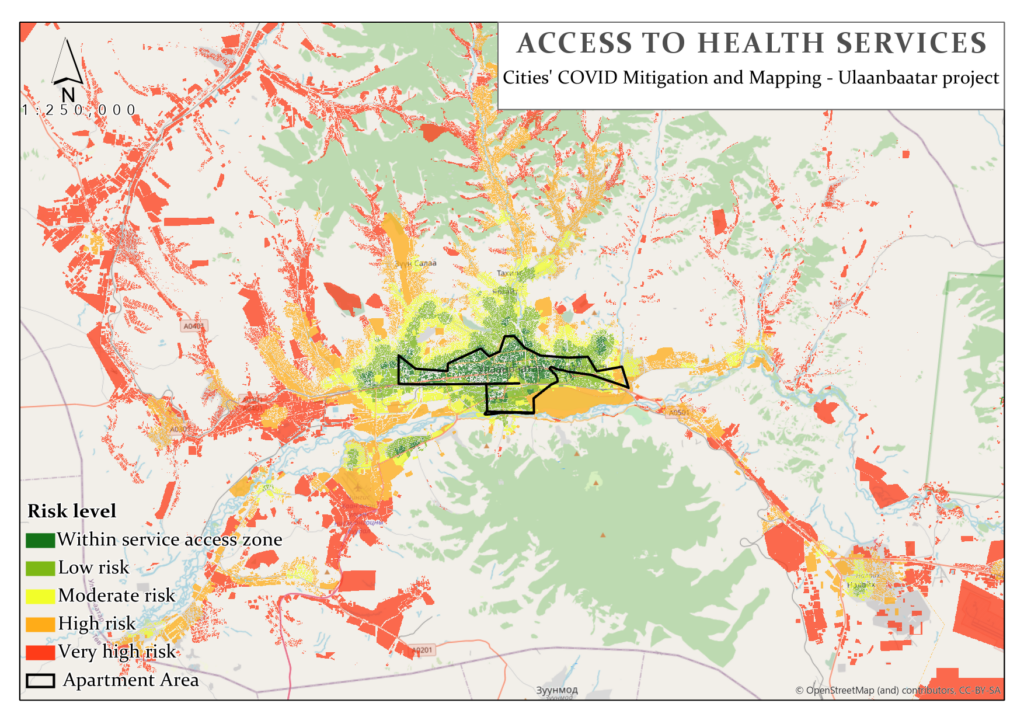
“I often need to find information about hospitals or pediatric clinics with emergency service when one of my kids runs a high fever or such. Then I would have to use google or Facebook to try and find some information” says Naraa, a mother of three who lives in Ulaanbaatar. She continued “It is very time consuming and frustrating, especially when it’s an emergency. Sometimes the information I find on Facebook or google is outdated, incomplete or there is no way to know if the hospitals that show up are legitimate or have good services or doctors.” Many Mongolians are in the same boat as Naraa because there is no reliable database on healthcare services accessible to public. People find hospitals usually by word of mouth or searching on Facebook and google, just like Naraa. This challenge didn’t help the situation when COVID-19 outbreak hit Mongolia.
Mongolia was one of the few countries that resisted the COVID-19 outbreak for over ten months. WHO and international media praised and exemplified Mongolia’s efforts in containing the virus, thanks to swift and strict measures to close its borders, suspend local travel, and enforce lock down measures – that is until November of 2020.
Almost a year later, relative to population, Mongolia now has one of the worst daily COVID-19 cases, hospitalization and death rates despite the high vaccination rate of almost 70%. The full swing of the pandemic put immense pressure on the health infrastructure evidenced by lack of non-COVID-19 related health services and national shortage of health workers. Access to health and medical services is interrupted due to lock–down and travel restrictions, limited or no availability of non-COVID-19 services, and lack of easily accessible information. Lack of easily accessible information is a critical challenge especially in a context of pandemic, where social distancing is of high importance and mobility is restricted.
The reduced access to health and medical services and its impact on Mongolians are not comprehensively documented. However, reports and anecdotes of Mongolians unable to access medical care have been many and sometimes with tragic consequences. The World Bank’s 2021 survey revealed that 1-in-5 Mongolians could not access health and medical services due to lock down, limited access to services, lack of mobility and fear of contracting the virus.
Mapping to mitigate secondary impacts of Covid-19
Public Lab Mongolia developed the Cities Covid-19 Mitigation and Mapping (C2M2) Ulaanbaatar project to mitigate the secondary health impacts of the Covid-19 pandemic. By creating a database of available health service, we hope to facilitate the access to health and medical services. The project’s focus was based on the existing challenges with service access pre-pandemic, burden of air pollution, the capacity and distribution of the Mongolian healthcare infrastructure, and vulnerability of ger area communities in Ulaanbaatar.

Pre-pandemic existing challenges
One of the key existing challenges in health and medical service access is a lack of reliable information about available services. Most people relied on limited word-of-mouth. Information on online sites or social media networks can be outdated, unreliable, and even misleading. Finding information about health or medical services can be a time-consuming and frustrating process. Because it is cumbersome, diagnosis and treatment can be delayed which negatively impacts health outcome.
Another issue with access to health and medical services concerns service distribution and geographic access for residents of ger areas, unplanned neighborhoods located on the outskirts of the city that lacks infrastructures including heating and water. The further one goes from the city center, the access to public services such as health, education, transport, water, and such become more limited. The level of access to services has an impact on people’s everyday lives such as time and money spent on getting to these essential services.
In order to show these, we created a series of maps which we call ‘Vulnerability Analysis’ by using government data on essential services. It is evident from these maps that people who live on the outskirts of the city lack access to critical services including healthcare which makes them more vulnerable to both direct and indirect impact of emergency situations like COVID-19 pandemic.

You can see the access levels differentiated in colors from dark green being within standard service access to red being 5 times further than
the service standard access. As you can see, the green zones are mostly within the apartment areas which is market with black outline.
Health service information portal and mobile app
In order to facilitate these challenges, our efforts focused on creating an up-to-date health service information portal. The portal and the app ease the process of finding information about the needed health services online, easily, especially during lock-down measures.
Using the health service information portal and mobile app, a user can look up available services using multiple filter options. These include filters such as proximity, location, specialties or type of service, opening hours, and wheelchair accessibility. It is a map-based, user-friendly tool that allows users to not only search and browse the services they are looking for, but also provide an option to leave ratings and comments that inform others about a particular service.
The health services portal and app are based on OpenStreetMap, making it possible for anyone to update and contribute to the data on the health services. For example, a pharmacy owner or manager can easily update the information about their pharmacy without dependency on anyone.
The development on the portal and app is still ongoing. At the end of the first revision, this tool can be used at a national level, and not just for Ulaanbaatar.
Check out the portal in progress: https://c2m2mongolia-demo.surge.sh/
Future needs, call for collaboration
We invite and encourage all interested parties and stakeholders to get in touch with us for future collaboration. The project is working on awareness raising activities to create usership and build local capacity to use the portal both for general public and stakeholders.
Project information
Contact: [email protected]
“The Cities’ COVID Mitigation Mapping (C2M2) program is part of the MapGive Initiative in the Office of the Geographer at the U.S. Department of State that builds partnerships to enhance geospatial capacity, generate data, and share maps to support planning for mitigating COVID-19 second order impacts. We acknowledge the many partners who make this a successful program.”
